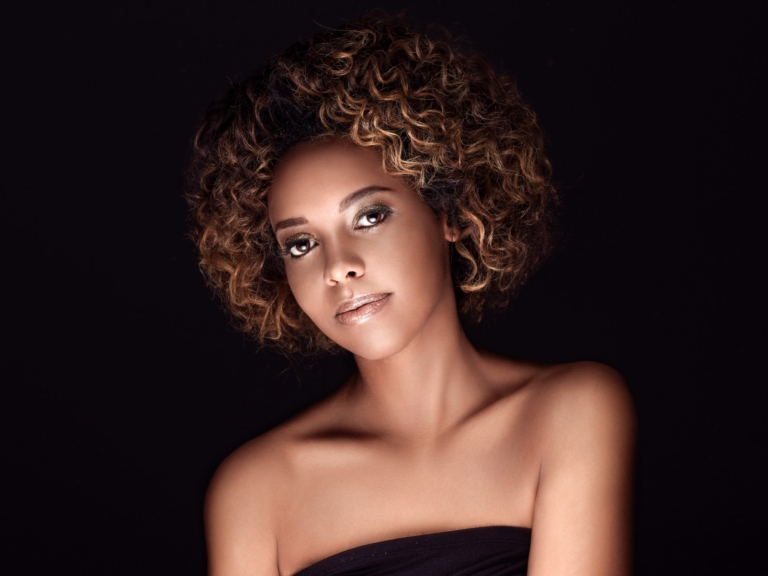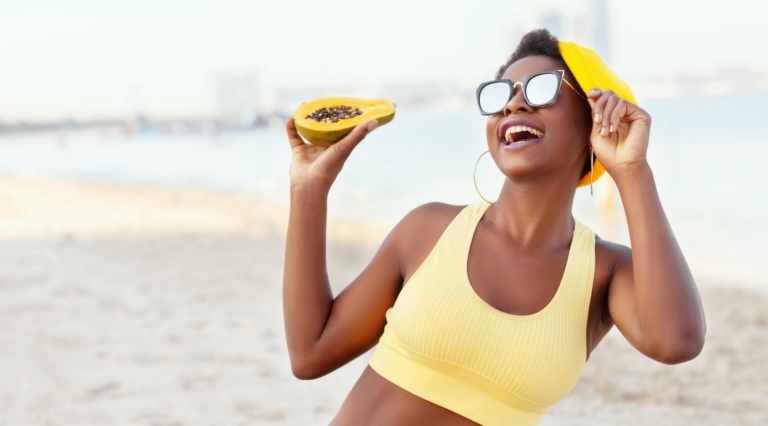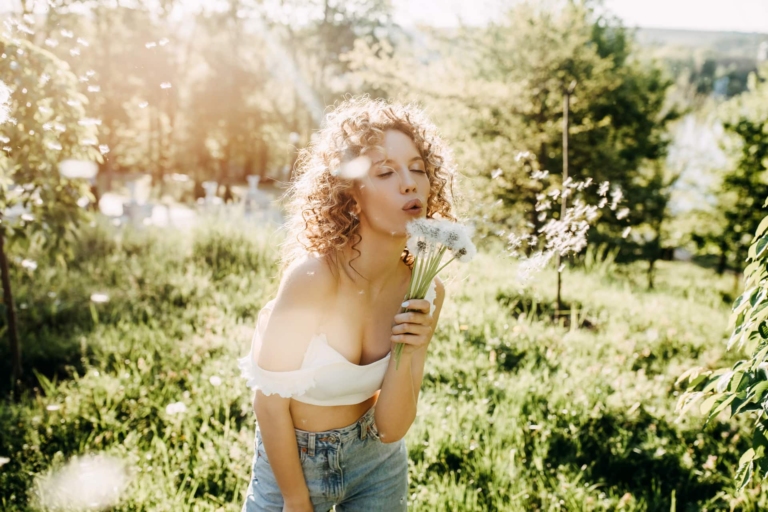How do I choose a (safe) sun cream?
It’s usually in summer, at the beach or the park, that we apply sunscreen.
Yet few people use sunscreen in spring, and even fewer throughout the year.
There are many myths in Quebec surrounding sun protection, the most popular and absurd of which is that sunscreens are very harmful and encourage people not to use them.
The truth is, however, that lack of sun protection can do far more harm to our skin than the use of sunscreens.
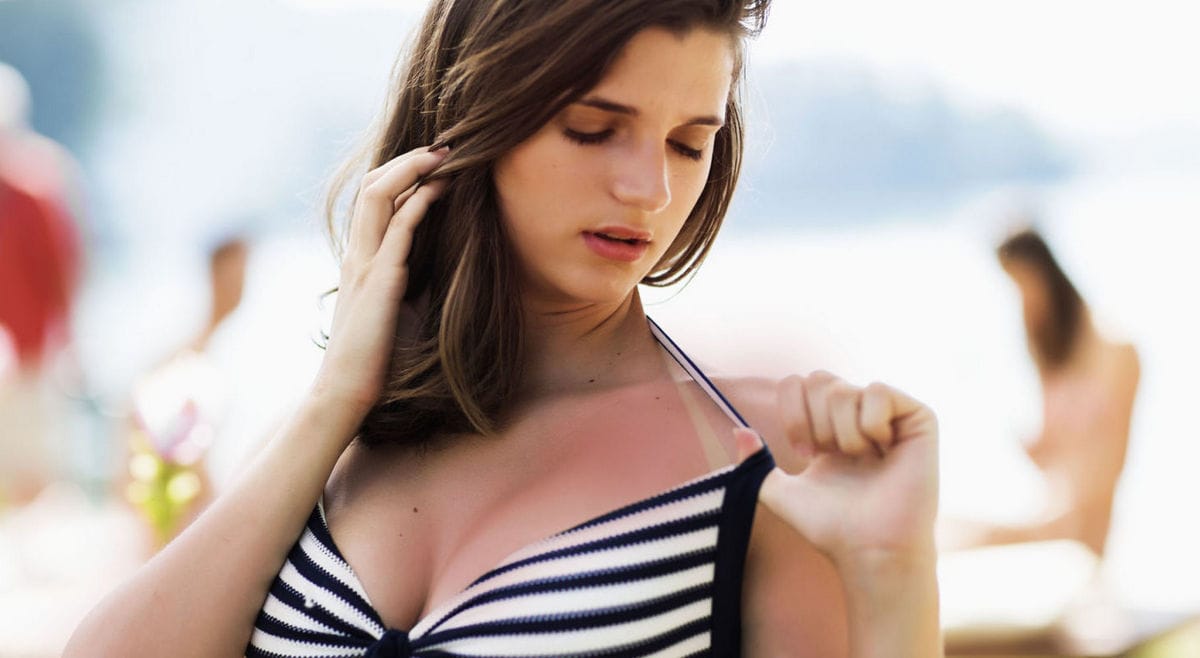
Why use sun protection?
Our skin is exposed to three types of UV radiation.
These are UVA, UVB and UVC rays.
Skin exposed to ultraviolet rays becomes irritated, red, ages faster and loses its healthy appearance.
That’s why it’s so important to enjoy the sun properly and avoid exposing your skin to the negative effects of UV rays.
Types of UV radiation and their effects on the skin:
UVC radiation is retained by the ozone layer and is the least harmful to the skin.
UVB rays are much more dangerous, and UVA rays are considered the most harmful.
UVB, UVB rays are responsible for the brown color of our tan, but also for sunburn, irritation, red shoulders and burnt noses.
It’s also responsible for freckles, hyperpigmentation and hard-to-remove spots on the skin.
UVB rays can also contribute to the development of cataracts in people who expose their eyes to the sun for prolonged periods.
UVA radiation is not as “noticeable” as UVB radiation, because it doesn’t burn, irritate or change the color of the skin.
However, it is radiation that promotes the formation of free radicals, cancerous lesions, collagen degradation, cell damage and photoaging.
Interestingly, this type of radiation is present all year round, even in winter, when there seems to be little sunshine.
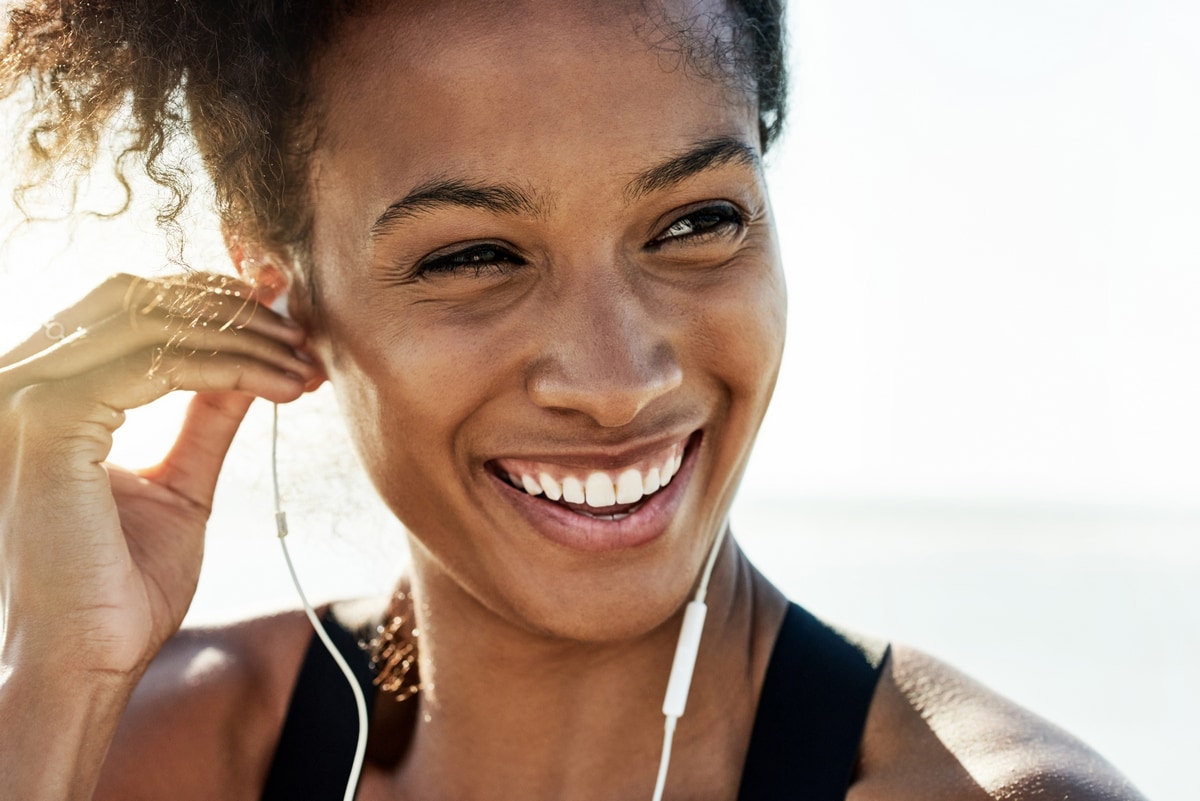
How can I protect my skin from UV rays?
To protect your skin from the negative effects of UV rays, it’s a good idea to follow tanning safety rules:
- Avoid exposure to the sun during the hours when UV radiation is strongest, i.e. between 11:00 and 15:00.
- We use protective creams with UV filters, which protect against two types of radiation: UVA and UV
- On the beach, we use the highest protection factor, between 30 and 50 SPF.
- Repeat the application of sunscreen after each bath and every 2 hours.
- Cover areas particularly prone to sunburn with light, airy fabrics and protect moles and birthmarks.
- When on the beach, cover your head with a hat, scarf or cap.
- Protect your eyes by wearing sunglasses with appropriate filters.
- Drink plenty of water when out in the sun
- Get a tan by gradually exposing your skin to the sun
- Do not use expired sun protection products
- Adopt a diet rich in antioxidants
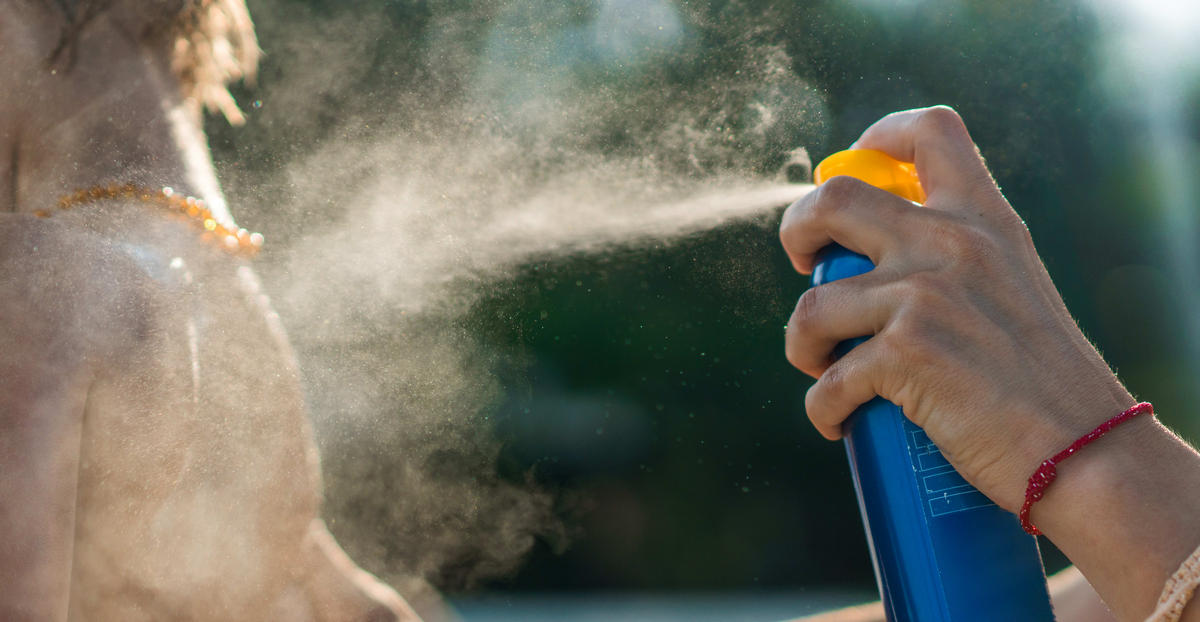
How do I buy a good sun cream?
When buying sun creams, there are several points to bear in mind:
- What type of filter does it contain: chemical, mineral?
- What type of radiation does it protect against?
- Does it contain antioxidants?
- Does it have a safe, natural composition?
Most sun creams indicate the amount of sun protection factor protection factors they contain.
This is called the SPF, or sun protection factor, and it indicates how well the cream protects the skin against sunburn and irritation, i.e. against the negative effects of UVB rays.
SPF does not, however, indicate how well the cream protects the skin against UVA rays.
Sometimes, on a tube of sunscreen, the UVA label is marked with a circle. that the UVA protection is about 1/3 of SPFSo, in the case of an SPF 30 cream, the UVA protection factor will only be 10.
More and more sunscreen manufacturers are beginning to use the IPD or PPD (PA) label on sunscreen packaging, indicating the level of UVA protection.
PPD (Persistent Pigment Darkening) indicates how many times the UVA dose absorbed by the skin on which a sunscreen has been applied is reduced.
It is measured 2 to 24 hours after sun exposure.
When we buy cosmetics labelled PPD or IPD, we know to what extent the cream will protect our skin against UVA rays.
Read also: Capillary PRP: The innovation that changes everything
In the absence of such information, we need to read the composition carefully, find the filters providing UVA protection and, based on their place in the INCI, assess how effectively the cream can protect us against UVA.
The indication PA on the packaging means that the cosmetic’s PPD value is equal to or greater than 16.
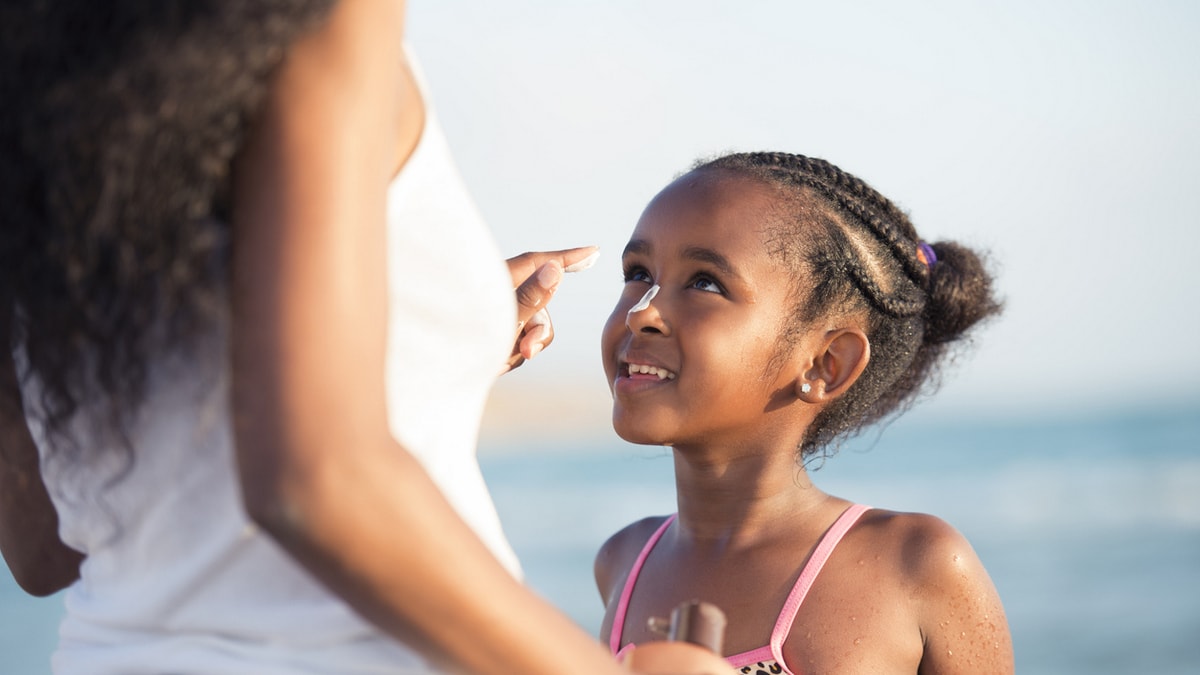
Types of sunscreen and their safety
The types of sunscreen used in cosmetics to provide UV protection are chemical and/or mineral filters.
Mineral filters include titanium dioxide, which provides protection against UVB rays, and zinc oxide, which also provides full-spectrum protection against UVA rays.
The most effective mineral sunscreens contain both titanium dioxide and zinc oxide.
Mineral filters are considered gentle and safe for the skin.
They are well tolerated by the skin, and do not cause allergic reactions or irritation.
Their use is recommended in protective cosmetics for children and people with very sensitive skin.
One of the major drawbacks of sunscreens with mineral filters is that they leave a white film on the skin, are difficult to spread, thick, dull and quite greasy.
Fortunately, more and more formulations are being developed that eliminate both the whitening effect and the difficulty of application, making cosmetics with mineral filters increasingly pleasant to use.
Read also: Are false nails dangerous for (your health)?
Chemical filters are easier to use than mineral filters, most of them also offer a full range of protection and are very stable.
They can be used safely, provided you choose a cosmetic with the right composition.
This is very important, as sunscreen manufacturers often “spoil” the composition of their cosmetics by adding strong allergens, a large number of silicones and synthetic fragrances.
Also still on the market are cosmetics containing so-called penetrating filters, which can have an estrogenic effect.
These filters should be avoided, as should unstable filters which quickly cease to protect our skin from the negative effects of UV rays.
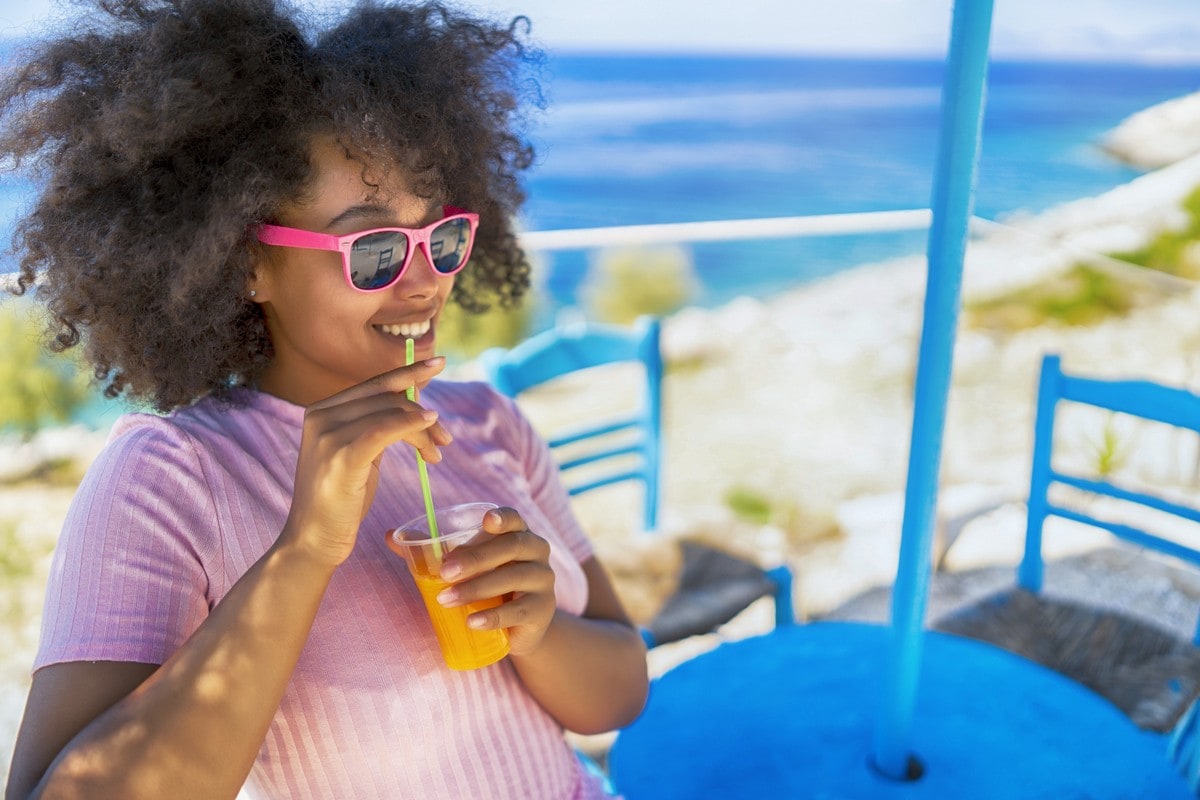
Chemical filters are considered safe
- Ethylhexyl salicylate other names for this filter Octisalate, Octyl salicylate, EHS, Escalol 587 provides UVA and UVB protection.
It can be used in concentrations of up to 5% and is non-hazardous.
It is sometimes used as a stabilizer for another sunscreen, Avobenzone Butyl Methoxydibenzoylmethane, which offers longer protection. - Diethylamino Hydroxybenzoyl Hexyl Benzoate also known as Uvinul A Plus protects skin against UVA rays
- Diethylhexyl Butamido Triazone also known as Uvasorb HEB protects against UVA and UVB rays
- Bis-Ethylhexyloxyphenol Methoxyphenyl Triazine also known as Tinosorb S, Escalol S, Bemotrinizol protects mainly against UVA and partially against UVB.
- Methylene-benzotriazolyltetramethylbutylphenol, also known as Tinosorb M, Biscotrizole, Milestab 360, protects against UVA and UVB rays.
- Mexoryl SX terephthalylidene dicamphor sulfonic acid, Ecamsule protects against UVA rays
- Drometrizole trisiloxane (also known as Mexotyl XL, Examsule) offers protection against UVA and UVB rays.
- Disodium Phenyl Dibenzimidazole Tetrasulfonate other names Neo Heliopan AP, Bisdisulizole disodiumprotector against UVA rays
- Ethylhexyl Triazone (also known as Uvinul T 150, EHT, Octyltriazone) is a PABA derivative that protects against UVB rays.
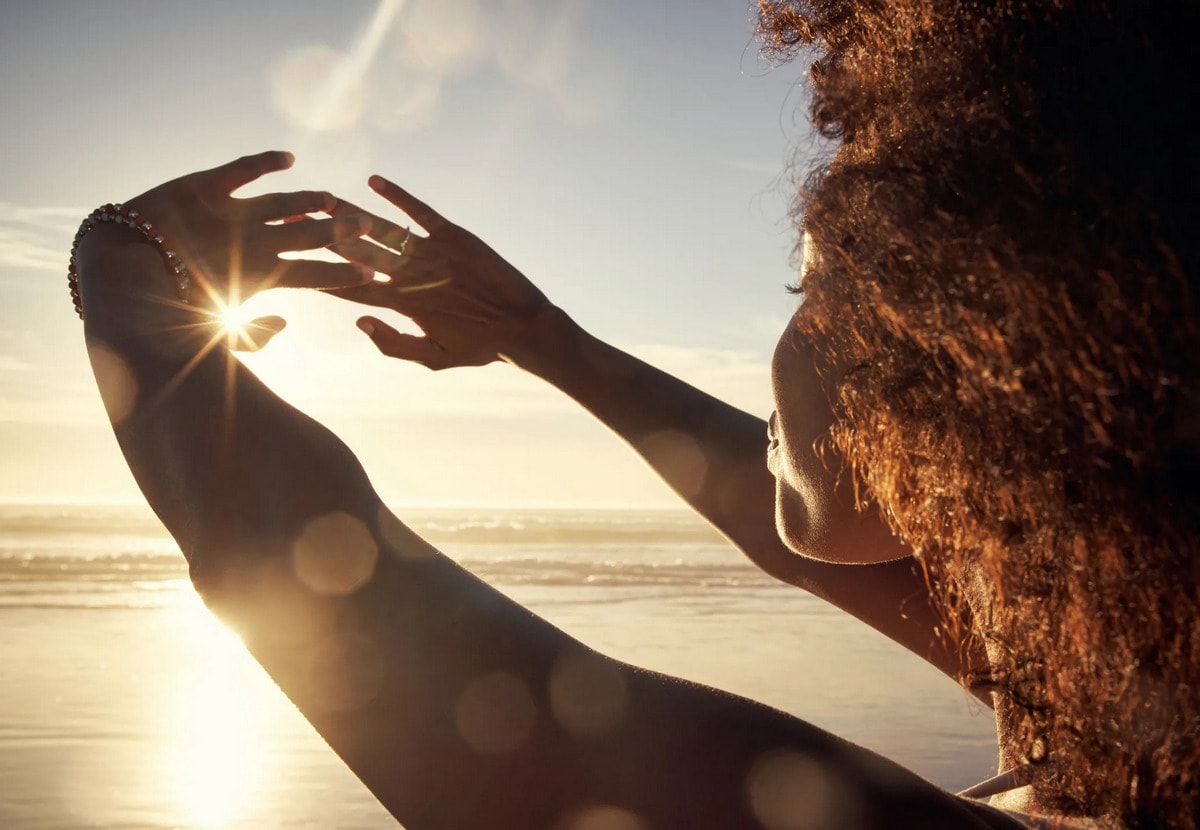
Chemical filters to avoid
- Ethylhexyl Methoxycinnamate other names for this filter Octyl Methoxycinnamate, Octinoxate, OMC, EHMC, Escalol 557, Parsol MCX, Eusolex 2292, Tinosorb OMC, Uvinul MC80
- Benzophenone-3 also known as Oxybenzone, BP3, Uvinul M40, Eusolex 4360, Escalol 567 and Benzophenone-4 /Sulisobenzone
- Homosalate HMS, Homomethyl Salicylate
- 4-Methylbenzylidene Camphor
- Octyl Dimethyl PABA other names Ethylexyl Dimethyl PABA, EHDP, Escalol 507, OD-PABA
- Butyl methoxydibenzoylmethane Avobenzone
- Octocrylene Uvinul N-539, OCR, Eusolex OCR
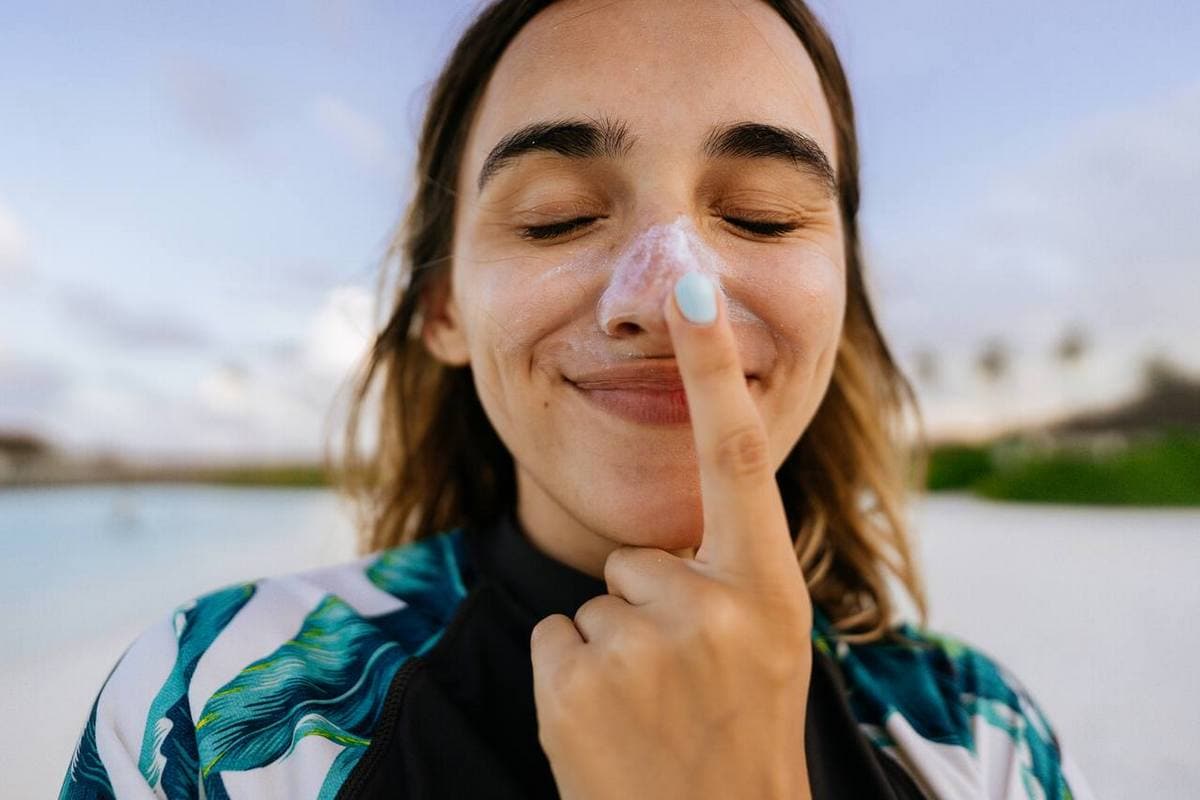
Sun protection for the skin: Vegetable oils and antioxidants
If you want to buy a good sun cream, it’s worth looking at its complete composition.
We look mainly for filters, which will help us determine the effectiveness and safety of the filters used.
But they are not the only ones to affect the cream’s protective effect.
Equally important are antioxidants such as vitamins C and E which, as ingredients penetrating into and through the epidermis, protect the skin against endogenous free radicals, formed in the skin as a result of natural biochemical processes, and slow down the skin’s photoaging processes.
Natural plant oils are also valuable.
Some of them contain natural protective filters, which can support and complement the action of mineral and chemical filters.
An added benefit of their presence in sunscreen composition is the skin-care effect of the oils, which protect the epidermis against water loss and have soothing and calming properties.
Also read: choosing the right hair color for my skin type?
Substances to be avoided in the composition of suncare cosmetics include formaldehyde donors, allergens, colorants, synthetic fragrances and PEGs.
People with sensitive skin should also avoid alcohol, which can dry out and irritate the skin.
Sunscreens should also be free from added essential oils with photosensitizing properties.
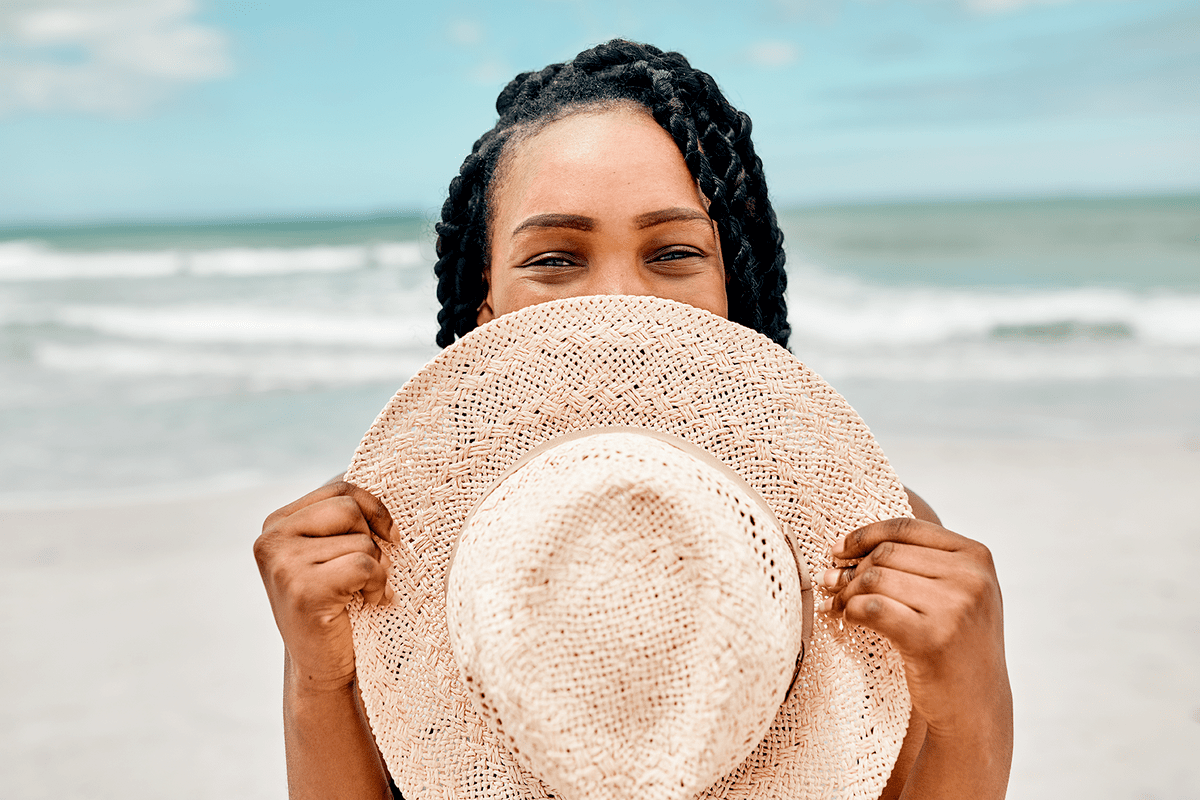
How to use sun creams
Most of us are used to taking sunscreen out of our bag only when we’re at the beach, and applying it to our skin when we’re already in the sun.
Unfortunately, this is a mistake, as most creams and sunscreens need time to take effect.
The duration depends on the product and the manufacturer’s recommendations.
It is often 15 to 30 minutes, which means that the cream should be applied to the skin 15 to 30 minutes before exposure to the sun.
It’s also worth remembering to reapply the cream during the day even every two hours, and that even a waterproof cream needs to be reapplied after getting out of the water.

How much sunscreen should I put on my face?
It’s also worth noting how much cream we apply to the skin.
According to research, it should be 2 mg per cm2 of skin, which is quite high.
In practice, however, we apply sunscreens in much smaller quantities, which unfortunately doesn’t give our skin optimum sun protection.
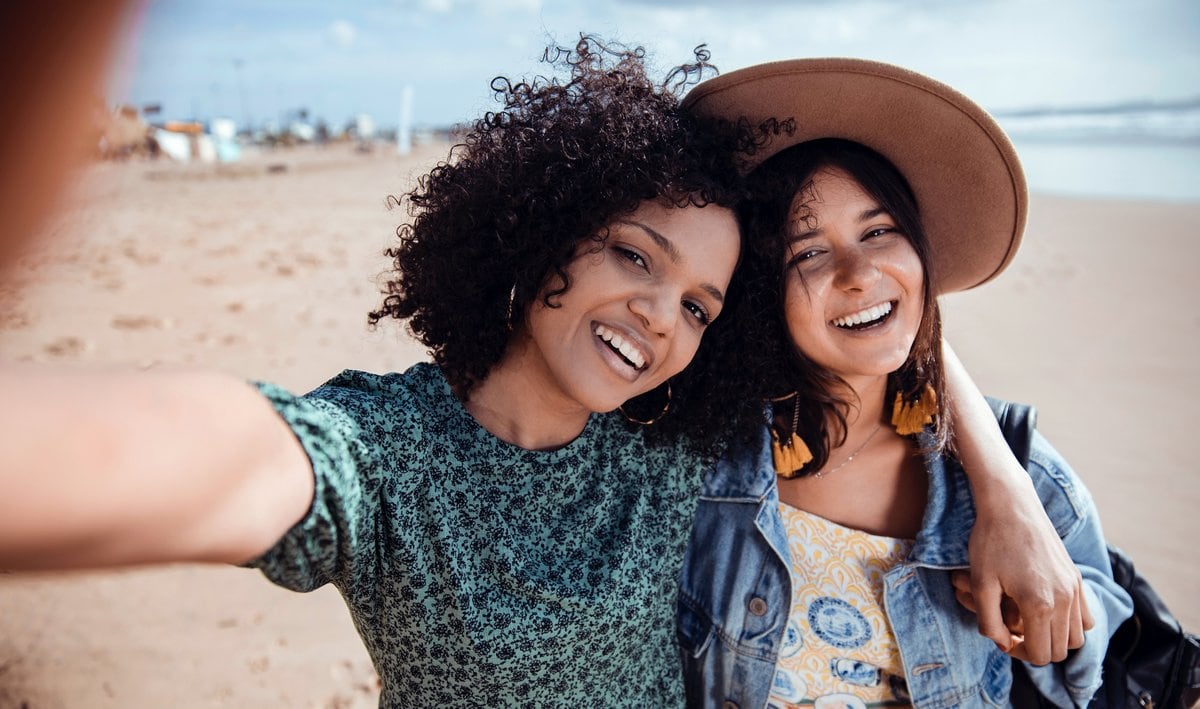
Cosmetics with sunscreen and skin phototype
When choosing cosmetic products with sunscreen, it’s important to know your skin’s phototype and complexion type.
Knowing your skin’s phototype is very useful for determining your skin’s ability to tan and predicting the risk of sunburn due to ultraviolet rays.
Skin phototype depends on the amount of melanin, a natural pigment produced by epidermal cells.
Melanin mainly plays a protective role, shielding the deeper layers of the skin from the harmful effects of UV rays.
Also read: protect your skin from the effects of stress!
When exposed to the sun, the skin “defends” itself by temporarily increasing melanin production, the visible effect of which is a tan.
However, melanin alone is not enough to protect the skin from the sun , hence the need for cosmetic products with an appropriately selected sunscreen.
Determining your skin’s phototype helps you choose the right level of sun protection.
Look for the SPF(sun protection factor) label on your sunscreen packaging.
The number next to the SPF indicates the height of the sunscreen.
This value tells you how many times longer your skin can remain exposed to the sun, compared to the time you spend in the sun without protection.
- Each skin phototype needs different protection
Your skin may sometimes require the permanent or temporary use of cosmetics with a high level of sunscreen, preferably SPF 50 or SPF 50+.
Don’t forget this!
- You undergo in-clinic treatments such as laser hair removal, spot removal, chemical peels or microdermabrasion.
- You are taking photosensitizing drugs such as tetracycline antibiotics, certain hormonal drugs or sedatives.
- You consume photosensitizing herbs such as St. John’s wort.
- Use cosmetics containing retinol, hydroxy acids or essential oils such as bergamot oil.
All these actions sensitize the skin to sunlight, which, on contact with the sun, can provoke an allergic reaction or side effects in the form of irritation, burns and permanent skin discoloration.
It’s a good idea to protect tattoos and moles with SPF 50 sunscreen.
If you have pigmented lesions on your skin, be sure to have them checked regularly by a dermatologist.

Should I use sunscreen at home?
It’s generally believed that it’s not necessary to use sunscreen when indoors.
This is not true, as UVA rays penetrate through windows or, for example, in a solarium, regardless of the degree of outdoor coverage.

Can vegetable oil replace sunscreen?
Can plant oils such as raspberry seed oil replace sunscreens?
Unfortunately, they can’t, and to date there’s no evidence to support their effectiveness in protecting skin from the sun.
It’s very difficult to estimate the exact SPF value of an oil, and how much should be applied to the skin for it to really protect against UVB rays.
It should also be borne in mind that oils partially penetrate the epidermis, reducing their protective value, and are not photostable.
Using vegetable oils as the only form of sun protection is therefore not the best choice.
However, it is worth supporting yourself with oils, using them alternately with protective creams, opting for sun creams that contain vegetable oils in their composition.
Using sunscreen should become a habit for everyone, especially in spring and summer, when the sun shines brightest and longest.
It’s a good idea to remember to apply them not only before going to the beach, but also before going out for a walk, in town and to the playground with the kids.
It’s also a good idea to protect your face with sunscreen, so that your skin stays younger-looking for longer and you can avoid discoloration and wrinkles.
“One of my biggest dreams is that my company will be able to change the course of one family’s life, one child at a time by giving back to the community.”




